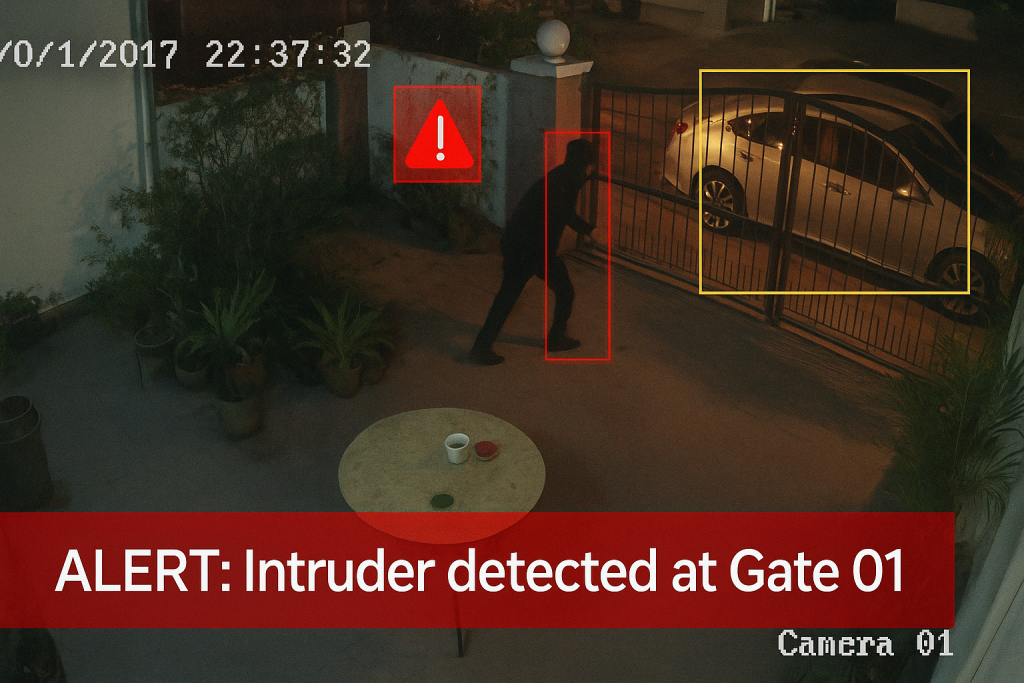Intelligent Vision Management System (IVMS)
Our system transcends traditional categories. It is not a Vision Management System (VMS) with add-ons; it is a Cognitive Security and Safety Infrastructure. By fusing every facet of physical monitoring into a single, intelligent platform, it provides a level of awareness, automation, and control that was previously only theoretical. This isn’t just a tool for a security team; it’s a central nervous system for the entire facility.
What is IVMS?
Intelligent Vision Management System (IVMS) is an all-encompassing AI-powered operations center that autonomously monitors, analyzes, and responds to a vast range of security, safety, and operational incidents across a physical site. It moves beyond mere management to active, intelligent orchestration of the entire environment, from the outermost perimeter to the most sensitive interior areas. It doesn’t just report problems; it understands context and enables pre-emptive action.
How does Vision management operate?
IVMS operates on a continuous loop of data ingestion, AI analysis, and automated response across multiple domains:
1. The Outer Perimeter: Proactive Barrier

Boundary Monitoring & Intruder Detection:
The first line of defense. The Vision Management identifies and alerts on any unauthorized breach of the outer fence or property line, day or night.
Vehicle Approach Analysis:
As a vehicle approaches, vehicle recognition and plate number identification grant or deny access automatically. Wrong way identification immediately flags vehicles moving against traffic flow, preventing accidents and securing entry/exit points.

2. The Grounds & Parking: Managed Movement & Compliance

Illegal Parking Detection & Vehicle Overcapacity Tracking:
Vision Management autonomously enforces parking rules and can identify when a vehicle (like a truck or van) is carrying a load exceeding its capacity, a critical safety hazard.
Area Monitoring & Unidentified Object Detection:
It continuously scans designated areas (e.g., near a generator, a fire exit) for left-behind packages, debris, or other objects that could pose a security or safety risk.


Vehicle Movement Tracking:
Tracks the flow and path of all vehicles on site, optimizing logistics and flagging erratic or suspicious movement.
3. The Building Interior: Secure & Safe Access

Restricted Entry & Facial Recognition:
Access is dynamically controlled. Facial recognition at doors grants seamless entry to authorized personnel while actively enforcing restricted entry policies.
People Movement Tracking:
Monitors foot traffic for congestion, ensures visitors don’t enter prohibited zones, and provides a live heatmap of building occupancy.

4. The Environmental & Life-Safety Layer: Always-On Vigilance

Fire and Smoke Detection:
Integrated directly with the video analytics, providing visual confirmation of alarms and triggering a full emergency protocol
Flood Identification:
Cameras equipped with analytics can detect water accumulation in basements, server rooms, or parking garages, providing an early warning for potential water damage.

5. The Unified Command Center of Vision management
All these data streams—security, vehicle, safety—converge on a single dashboard. An alert for a flood can be cross-referenced with people movement tracking to see if anyone is in the affected area, while an intruder detection can be paired with vehicle movement tracking to see if they have a getaway car.
Key Capabilities of Vision management
- Multi-Modal AI Analytics Core: The brain of the system, simultaneously processing feeds for facial recognition, vehicle attributes, object classification, and anomalous behavior (wrong way, loitering).
- Holistic Perimeter-to-Indoor Protection: A layered defense strategy that provides seamless coverage from the fence line to the inner sanctum.
- Integrated Life-Safety & Environmental Monitoring: Unifies security with facilities management, detecting fire, flood, and other hazards within the same platform.
- Automated Traffic & Parking Management: Enforces traffic flow, parking rules, and vehicle safety compliance without human intervention.
- Dynamic Access Control: Grants and restricts access for both people and vehicles based on real-time identity, authorization, and even situational context (e.g., locking down during an emergency).
- Unidentified Object & Anomaly Detection: Proactively identifies potential threats (suspicious packages) or operational issues (debris blocking a fire door).
- Centralized Incident Orchestration: Correlates disparate events (e.g., an intruder detection at the boundary followed by unidentified object detection in a parking lot) to present a complete picture of an incident.